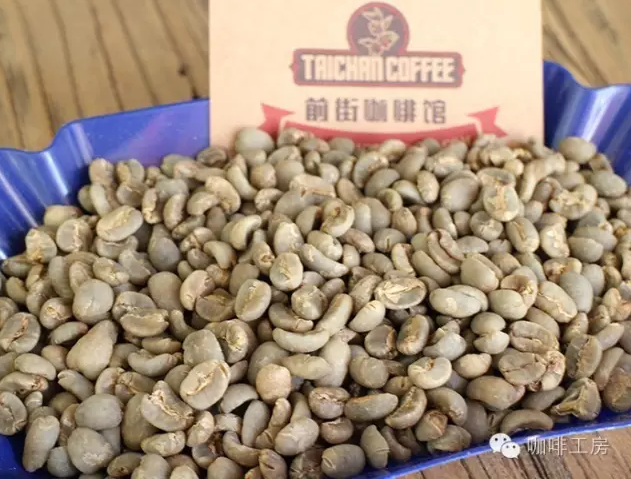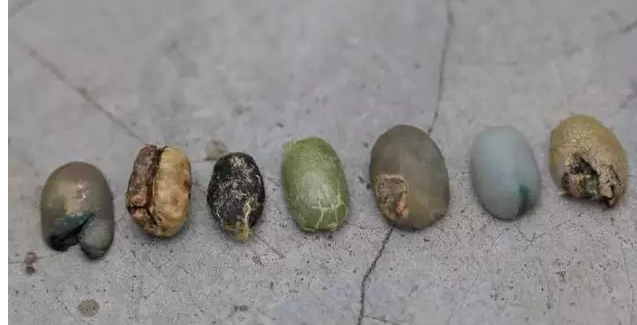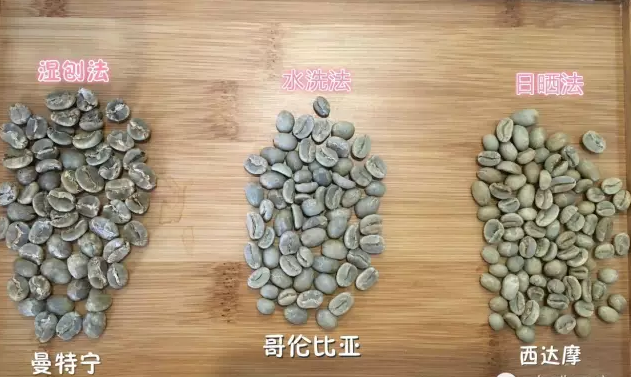The best traditional Arabica coffee in Sumatra is called Lindong Lintong Manning.
Manning is a kind of Sumatran coffee from Indonesia in Asia, also known as "Sumatran coffee".
Manning, produced in Sumatra, Indonesia, Asia, is also known as Sumatran Coffee. The main producing areas are Java, Sulawesi and Sumatra, of which Sumatra is the most famous "Mantelin". The best of the exquisite traditional Arabica coffee produced in northern Sumatra of Sumatra is sold as Lindong Lintong and Manning Mandheling.
To be exact, Lindong Lintong refers to coffee growing in a small area in the southwest of Lake Toba in Lindong District. The small coffee growing area is scattered on a high and wavy clay plateau full of fern covers. Lintong Lindong Coffee is grown without shade, does not use chemicals, and is almost entirely owned by small private owners.
The palate is rich and solid, with a pleasant sour taste. The smell is mellow, the acidity is moderate, the sweetness is rich and very intriguing, it is suitable for deep baking and exudes a strong aroma. Manning is very close to life, sweet in bitterness. Only by experiencing its bitterness can we enjoy its unique sweetness.
Our roaster's understanding of coffee beans, and then suitable for most people's taste, to maximize to show the flavor of Mantenin, boutique coffee has its own characteristics, certainly will not be the same as other manufacturers' taste, with our unique understanding of coffee, showing a sense of smoothness.

[test Manning for light baking, medium-deep baking, deep baking]
Test the Mantenin of light baking, medium-deep baking and deep baking. The test method, usually manual extraction, per person, the thickness of the powder and the water temperature are slightly adjusted due to different baking.
1. Light baking: small Fuji ghost teeth grinding 3.5, water temperature 90 degrees, gouache 1:15
2. Medium and deep baking: small Fuji ghost tooth grinding 4, water temperature 88 degrees, gouache 1:15
3. Deep baking: small Fuji ghost teeth grinding 4.5, water temperature 86 degrees, gouache 1:15
[test results]
1. Light baking: under this baking degree, Mantenin has a strong sour taste, slightly bitter, obvious acidity, but the entrance is very comfortable, with a smooth feeling on both sides of the mouth.
2. Medium-deep baking: the sense of balance is very good, the aroma is rich and mellow, the bitterness is obvious, the chocolate and slight sweetness are more prominent, the licorice aroma is obvious, the fruit acidity is weak, the smooth feeling is better than light, the fragrance is strong, and the fruit acidity is obviously improved.
3. Deep baking: almost no sour taste, bitter taste is very heavy, if baked directly, then slightly improper baking will produce charred smell.
[Sumatra wet planing]
Every year from March to May and September to December is the Sumatra harvest season for Manning, and now most coffee farmers only harvest all-red coffee cherries. After collecting coffee cherries in the morning, coffee cherries will be peeled and peeled in the afternoon. Sumatra has a superior natural environment, and most of the water used will be mountain spring water.
1. Peel the coffee fruit, put the shell beans into a vat or sink filled with water, and remove the defective shell beans floating on the liquid surface.
2. Wash the dense shell beans sunk to the bottom of the water slightly, put them into a bucket or plastic bag, and do a little dry body fermentation, that is, to ferment and flavor the pectin sugar on the surface of the seed shell. Basically, the longer the fermentation time, the more sour. The fermentation time varies from person to person, generally only a few hours, but some manors omit the dry body fermentation stage and directly expose the shell beans, which can always be sour and improve the sticky taste, so that the pectin sugar can be fully fermented to increase the flavor, usually between 12-36 hours, depending on the specific situation.
3. When the bean with shell is exposed to the sun for one or two days, the moisture content of the bean body is 30% 50%, and the bean body is still semi-hard and semi-soft. Wipe off the seed shell with a shell planer to speed up the drying process. After about two days, the moisture content of the bean reaches 12% Mui 13%. The coffee beans will be collected into a woven bag, usually 40 kg and 80 kg each, and will be sent to the coffee processing factory for shelling, and the success will be completed in about four days.
The shelling process is to grind off the bean shell with a shell planer and then dry it until the moisture content reaches about 12% to 15%. The coffee beans are then sent for machine selection to remove a variety of impurities and then sorted by particle size.
Of course, accidents can happen.
In the shell planing process, the coffee bean temperature will rise to 30-60 degrees, and completely destroy the parchment, which is likely to trigger the bean sprouting.
Wet planing will also occur because the peel is removed in the production process, and the beans come into direct contact with the air, so defective beans such as mildew beans are much higher than water washing and sun drying.
Mold brings good flavor.
Because coffee beans have four layers of protection-pericarp, pectin, seed shell, silver skin. In the washing method, only the first two layers were removed, and the seed shell and silver coat were preserved and dried in the sun. On the other hand, the wet planing method cuts off the third and fourth layers of protection, that is, the falling body is sunbathed, which is why the raw Sumatran beans are turquoise. Although the wet planing method shortens the drying time, the probability of being unmanned by molds, fungi and yeasts is also greatly increased.
Interestingly, pollution is not a bad thing, depending on the strain. Dr. Martha Donniva of the Brazilian Institute of Food Science and Technology has tried to use different strains of touching coffee beans to produce different flavors, including decay, fuel consumption, mildew, wood, iodine, caramel, chocolate and floral aromas. Scholars believe that the wood flavor, immortal grass flavor, earth flavor, banana flavor and spice flavor of Sumatran coffee should be made by mold.
The director of the baking plant often reflects to the academic circles that some coffee beans with touching mold have a better flavor after being cleaned, but some are difficult to import and are related to bacteria. It may be possible to suppress bad mold and implant good mold, just as winology calls "controlling savage yeasts" and "cultivating elegant yeasts". But which molds help to enhance the flavor of coffee? Which are bad bacteria? It needs to be further studied.

The rate of sheep's foot bean is high.
The wet planing method may touch the germination mechanism of raw beans and then affect the flavor. Because coffee beans that run out of four layers of protection are in a state of falling body, which is much more likely to trigger sprouting than washing beans with only two layers of protection, that is, activating the metabolism of sugars, proteins and fats, all of which are precursors of coffee aromatics.
In addition, the friction of coffee beans in the shell planing process, the bean body heating up to 30 ℃-60 ℃, is also conducive to sprouting and mold growth. And the semi-hard and semi-soft wet raw beans are easily crushed by mechanical force when removing the seed shell, and the beans are easy to crack like a sheep's hoof, which is why there is a high ratio of sheep's hoof beans in Sumatra. However, it is still inconclusive whether the bauhinia bean is good or bad.
He said with a smile: "with proper control, it is full of fruity and sweetness." The focus of control is to keep the utensils and beans clean. Once the shell is planed, it needs to dry quickly to produce a mellow, low-acid and sweet taste of Sumatra; if not controlled properly, it may produce a boring Sumatra or even moldy smell. If you like the sour taste, Yachi can also wash it, depending on the needs of customers. "

Summary:
To sum up the flavor of the wet planer, apart from those slight differences, we generally think that the wet shaved bean has the taste of soil, tobacco and chocolate, and the sour taste is called "low acid", mellow and dull.
Low acid comes from a shorter, weaker fermentation process and a longer drying time, if you forget the wet plane fermentation, turn back and have a look. As for the "earthy taste" of wet shaved beans, there are different opinions. Some people say that this is related to the beans selected in the wet planing-related producing areas (Tim & Kadim: with Rob pedigree), some people say that this is the result of the organic interaction between raw beans and the outside world, and some even say that it is because there are too many defective beans! Of course, there are a lot of...
There are many sources of defective beans in the wet planing method. First of all, there must be some natural defects in the coffee fruit, and another defect contributor is the shelling part, the corrosion of the wet shell beans during transportation, the damage of sunlight and moisture to the naked raw beans, and one point, the uneven drying speed brought by irregular weather also reduces the flavor. Why did Manning choose by hand so many times? Of course there's a reason for that.
Finally, let's summarize the characteristics of various ways of handling raw beans:
Acidity: washing > semi-washing > honey treatment > wet planing > solarization.
Sweetness: sun > honey treatment > wet planing > semi-washing > washing.
Production risk: wet planing / solarization > washing / honey treatment > semi-washing
Equipment cost: washing / semi-washing > honey treatment / wet planing > solarization
Amount of water used: water washing > semi-washing > honey treatment / wet planing method
[different utensils and different cooking methods], the taste will be different.
[hand] Flavor: changeable, clean, balanced, lasting caramel sweetness
1. Choice of appliances: Hario V60
two。 The temperature of the water: 88 degrees
3. Thickness of powder: small Fuji grindability 4
4. Depth of baking: medium and deep baking
5. Steaming time: 25 seconds
Specific techniques: [three times cut off water] hand flush Mantenin, 15g powder, 4 grinding of small Fuji ghost tooth cutter, V60 filter cup, 88-89 degrees water temperature, 30g water injection for the first time, steaming for 25s, water cut off to 104g water, waiting for powder bed water to half water and then water injection, slow water injection until 220g water, no 5 grams at the end, water powder ratio 1:15, extraction time about 2:00
Manning is extracted with volcanic flushing, flannel or kono is also possible.
Specific techniques: high temperature extraction, water temperature 90-92 degrees, small water injection in front, size and position of one-yuan coin, cut off water, stew, cut off water, keep powder in steaming state, steaming time 1:30, and finally fast extraction with large water flow. the total extraction time is 2:30.
[Philharmonic pressure] Flavor: full-bodied, complex, outstanding spice, forest fragrance
1. The choice of instruments: Philharmonic pressure
two。 The temperature of the water: 85 degrees
3. Thickness of powder: small Fuji grinding degree 3.5
4. Depth of baking: medium and deep baking
5. Length of steaming time: 2 times, 20 seconds for the first time, 50 seconds for the first time
Specific techniques: Philharmonic pressure positive pressure preparation, it is recommended to add 20 grams of coffee powder, gouache ratio at 1:17, first into 83 degrees hot water 100g, stir three to five times to make coffee powder fully wetting, static for 20s, add remaining hot water to 240g, rest for 40s, stir for 5s, wait until 1 minute 50 seconds up and down pressure, the total time is 2 minutes 5 seconds.
[siphon] Flavor: round, full-bodied, herbs and bitterness, accompanied by caramel sweetness
1. Selection of utensils: Hario siphon pot
two。 The temperature of the water: 90 degrees
3. Thickness of powder: small Fuji grinding degree 3.5
4. Depth of baking: medium and deep baking
5. Length of steaming time: 30 seconds
Specific techniques: side-fired extraction, it is recommended that 20 grams of powder for 2 parts, gouache ratio at 1:12, water scale 2, add powder after use, drop powder after blistering, stir 4-5 times, extract for about 30 seconds, and finally, stir 2 times, wait for the coffee liquid to fall freely.

[French pressure] Flavor: balanced, mellow, good texture and fat, with a little sweetness
1. Selection of utensils: French pressure kettle
two。 Temperature of water: 92 degrees
3. Thickness of powder: small Fuji grindability 4.5
4. Depth of baking: medium and deep baking
5. Length of steaming time: 2 minutes and 30 seconds
Specific techniques: 20g coffee beans, hot water (about 92-93 ℃) into the kettle, until the kettle body marked capacity 300ml water, start timing, pressure kettle lid on the lid, the filter can stop at the highest place, wait two and a half minutes. Press the filter to the bottom
Summary:
Recommend [hand] and [Philharmonic pressure] methods to show Mantenin's rich and glycolic flavor, siphon and pressure methods, it is easier to cause over-extraction, but once over-exquisite, you can only taste sour and bitter flavor.
Important Notice :
前街咖啡 FrontStreet Coffee has moved to new addredd:
FrontStreet Coffee Address: 315,Donghua East Road,GuangZhou
Tel:020 38364473
- Prev

What's the specific way to have a cup of Sumatra manning? What's the flavor?
Sumatran wet planing is the annual harvest season for manning in Sumatra from March to May and September to December, and now most coffee farmers only harvest all-red coffee cherries. After collecting coffee cherries in the morning, coffee cherries will be peeled and peeled in the afternoon. Sumatra has a superior natural environment, and most of the water used will be mountain spring water. 1. The coffee fruit is peeled and will take shell beans.
- Next
Manning's Robusta pedigree, Arabica beans or Katim or Katim?
Manning is a kind of Sumatran coffee from Indonesia in Asia, also known as Sumatran coffee. Manning, produced in Sumatra, Indonesia, Asia, also known as Sumatran coffee. The main producing areas are Java, Sulawesi and Sumatra, of which Sumatra is the most famous. Exquisite from Sumatra in northern Sumatra
Related
- Detailed explanation of Jadeite planting Land in Panamanian Jadeite Manor introduction to the grading system of Jadeite competitive bidding, Red bid, Green bid and Rose Summer
- Story of Coffee planting in Brenka region of Costa Rica Stonehenge Manor anaerobic heavy honey treatment of flavor mouth
- What's on the barrel of Blue Mountain Coffee beans?
- Can American coffee also pull flowers? How to use hot American style to pull out a good-looking pattern?
- Can you make a cold extract with coffee beans? What is the right proportion for cold-extracted coffee formula?
- Indonesian PWN Gold Mandrine Coffee Origin Features Flavor How to Chong? Mandolin coffee is American.
- A brief introduction to the flavor characteristics of Brazilian yellow bourbon coffee beans
- What is the effect of different water quality on the flavor of cold-extracted coffee? What kind of water is best for brewing coffee?
- Why do you think of Rose Summer whenever you mention Panamanian coffee?
- Introduction to the characteristics of authentic blue mountain coffee bean producing areas? What is the CIB Coffee Authority in Jamaica?

